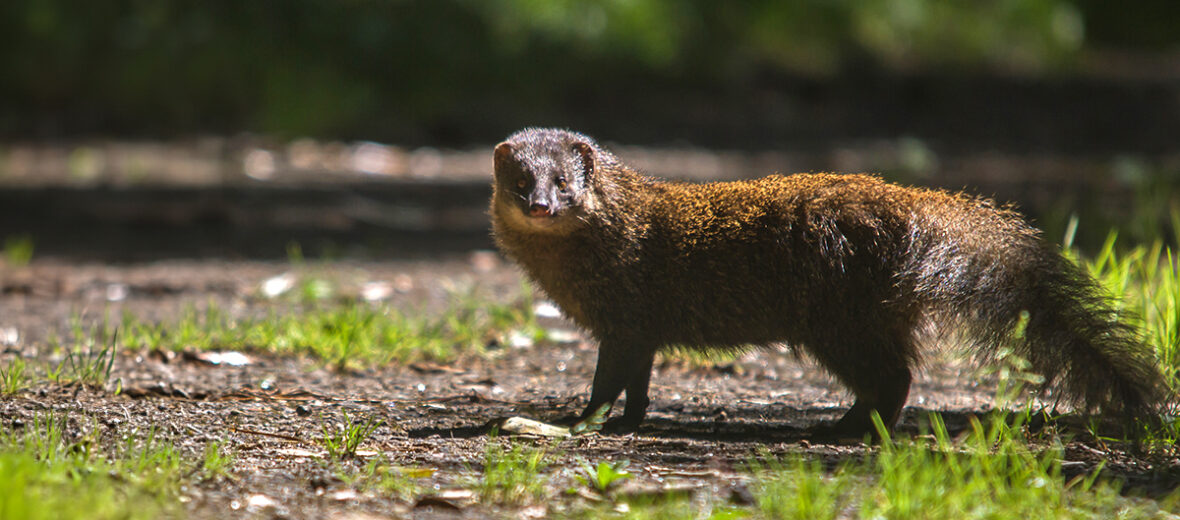
The Indian brown mongoose can be found in southern India and Sri Lanka. They live at elevations of up to 4,300 feet. These critters prefer thick jungles and forest patches, but can also be found at the outskirts of towns. Even though they face the threats of habitat loss at the hands of residential & commercial developments, as well as from logging; hunting; trapping; and the effects of pollution, they still have a stable population and are listed as Least Concern by the IUCN.
First the Stats…
Scientific name: Herpestes fuscus
Weight: Up to 5.95 lbs.
Length: Up to 18.9 inches, plus up to a 13.39 inch tail
Lifespan: Up to 20 years
Now on to the Facts!
1.) In the 1970s, these mongooses were introduced to Fiji, where they dwell within the same territories as the Javan mongoose.
2.) These mongooses are solitary and only come together to mate.
3.) Indian brown mongooses are nocturnal (active at night).
4.) While they typically flee when approached, if cornered, they will put up a heck of a ferocious fight.
5.) Mice, rats, snakes, frogs, lizards, spiders, grubs, birds, bird eggs, berries, and flowers are all on the menu.
But wait, there’s more on the Indian brown mongoose!
6.) When hunting, they will sit motionless if a victim is spotted. Once it gets close enough, they pounce on it and kill it with a bite to the neck at the base of the skull.
7.) Females undergo up to a 57 day gestation (pregnancy) that yields up to 4 pups.
Did you know…?
Mongooses can run up to 20 mph!
8.) A burrow is constructed or often taken over in which the pups are born.
9.) Mating takes place throughout the year.
10.) Pups are weaned in up to 5 weeks and leave mom at up to 6 months.
11.) Big cats and birds of prey hunt these mongooses.
Now a Short Indian Brown Mongoose Video!
Be sure to share & comment below! Also, check out the Critter Science YouTube channel. Videos added regularly!
Want to suggest a critter for me to write about? Let me know here.
Some source material acquired from: Wikipedia & IUCN
Photo credit: Navaneeth Kishor



